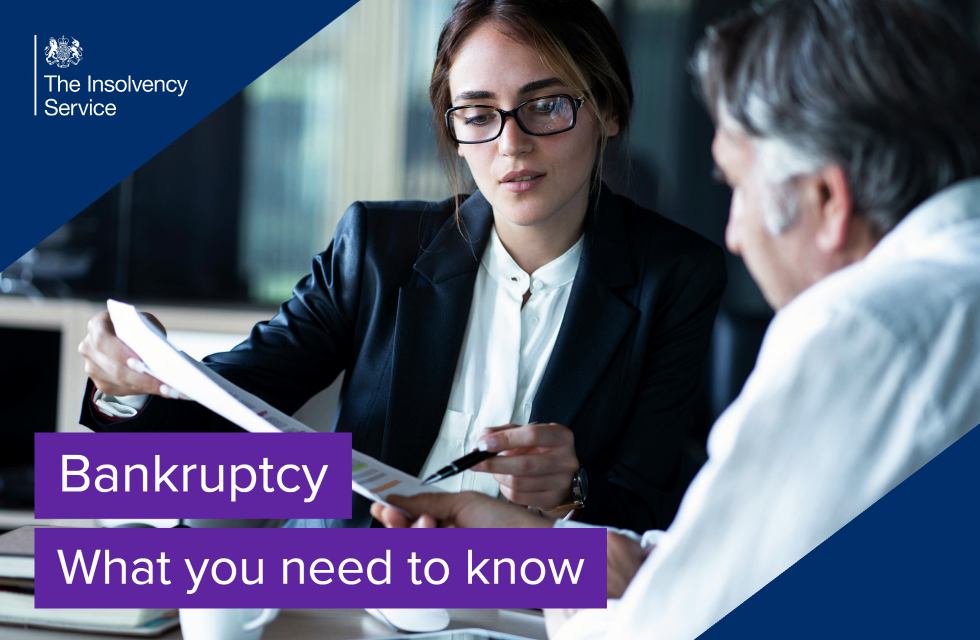An Unbiased View of Insolvency Practitioner
An Unbiased View of Insolvency Practitioner
Blog Article
An Unbiased View of Insolvency Practitioner
Table of Contents7 Simple Techniques For Insolvency PractitionerMore About Insolvency PractitionerUnknown Facts About Insolvency PractitionerThe Ultimate Guide To Insolvency PractitionerInsolvency Practitioner - TruthsOur Insolvency Practitioner DiariesThe Main Principles Of Insolvency Practitioner
Bankruptcy is when responsibilities are better than the worth of the business, or when a debtor can not pay the financial obligations they owe. A firm can become insolvent as a result of a number of situations that lead to poor cash circulation. When confronted with insolvency, a business or person can speak to creditors directly and restructure debts to pay them off.
Organization proprietors may get in touch with lenders directly and restructure financial obligations into more manageable installments. Lenders are typically responsive to this approach since they want to be settled and avoid losses, even if the payment is on a delayed timetable.
The proprietor produces a proposition detailing how the debt may be reorganized making use of cost reductions or other strategies for assistance. The proposal shows lenders how the company may produce adequate capital for rewarding procedures while paying its financial obligations. Typically, a forgiven debt might be thought about earnings by the Irs (IRS).
The Best Guide To Insolvency Practitioner
When a company has actually to pay boosted rates for products and solutions, the company passes along the expense to the customer. Instead than pay the boosted expense, several consumers take their organization somewhere else so they can pay less for a services or product. Shedding clients results in shedding earnings for paying the business's creditors.
When procedures cease, so does the firm's revenue. Some companies end up being financially troubled because their goods or solutions don't progress to fit customers' altering requirements.
Some Known Incorrect Statements About Insolvency Practitioner
Expenditures exceed profits and expenses stay overdue. Cash-flow bankruptcy occurs when a business has the possessions to cover their debts however they are in the wrong form, such as real estate instead of fluid funds. Balance-sheet insolvency, on the various other hand, shows a lack of assets in any type of form to cover financial obligations.
The internal revenue service states that an individual is bankrupt when the total responsibilities go beyond total assets. Insolvency Practitioner. A bankruptcy, on the other hand, is a real court order that portrays how a bankrupt person or business will pay off their financial institutions, or exactly how they will certainly market their possessions in order to make the settlements
The Ultimate Guide To Insolvency Practitioner
When a business or person is bankrupt, they can not meet their economic commitments. Insolvency is not the same as insolvency, although a business that has actually ended up being insolvent may submit for insolvency. Insolvency is the state of not being able to pay your responsibilities while bankruptcy is a lawful process to discharge your financial obligations.
Understanding the elements that can lead to insolvency, such as overspending, can aid you protect against insolvency and its consequences.
Some Known Factual Statements About Insolvency Practitioner
It is popular that supervisors and policemans of firms (and supervisors of limited liability companies) owe fiduciary duties to their companies and their investors (or participants). These fiduciary obligations are defined by state laws and, though there are variations from one go state to another, they commonly consist of a responsibility of loyalty and a duty of treatment.
The obligation of care needs supervisors and police officers to work out diligence, to he has a good point make educated choices, and to act in great confidence to ensure that their actions remain in the finest passion of the business. Beyond the extent of this conversation, some states enable these obligations to be restricted either by so noting in the organizational papers or conforming with various other requirements.
9 Simple Techniques For Insolvency Practitioner
:max_bytes(150000):strip_icc()/accountinginsolvency_definition_final_primary_1013-ec9f30044d93461fb78191b77bbcbd17.jpg)
Take care about providing investors favoritism at the expense of financial institutions (e.g., licensing and funding a returns or a supply redemption). Take care about favoritism in between classes of investors. Make reasonable efforts to learn all the facts prior to taking a details strategy; supervisors should truly believe that any type of decisions made are in the most effective rate of interests of the company in its whole (i.e., choices will certainly be evaluated in hindsight taking into account the impact of such activities on the firm).
In any type of personal bankruptcy or bankruptcy proceeding, repayments made to particular creditors at the expenditure of various other financial institutions can be clawed back, specifically if More Bonuses there is some connection in between the firm and the creditor. Think about recommending at a yearly shareholder meeting (or any various other meeting of shareholders) a resolution verifying that all previous business decisions and actions taken by the supervisors and officers of the corporation were taken in great confidence after an exercise of sensible care.
7 Simple Techniques For Insolvency Practitioner
Totally divulge any type of personal or company relationships with events on the other side of purchases entailing the firm to avoid the look of a conflict of passion. In reviewing prospective fund elevating purchases or a sale of properties of the distressed firm, understand that these deals may be scrutinized later on due to any subsequent development of supervisors' fiduciary obligations to consist of creditors.
Report this page